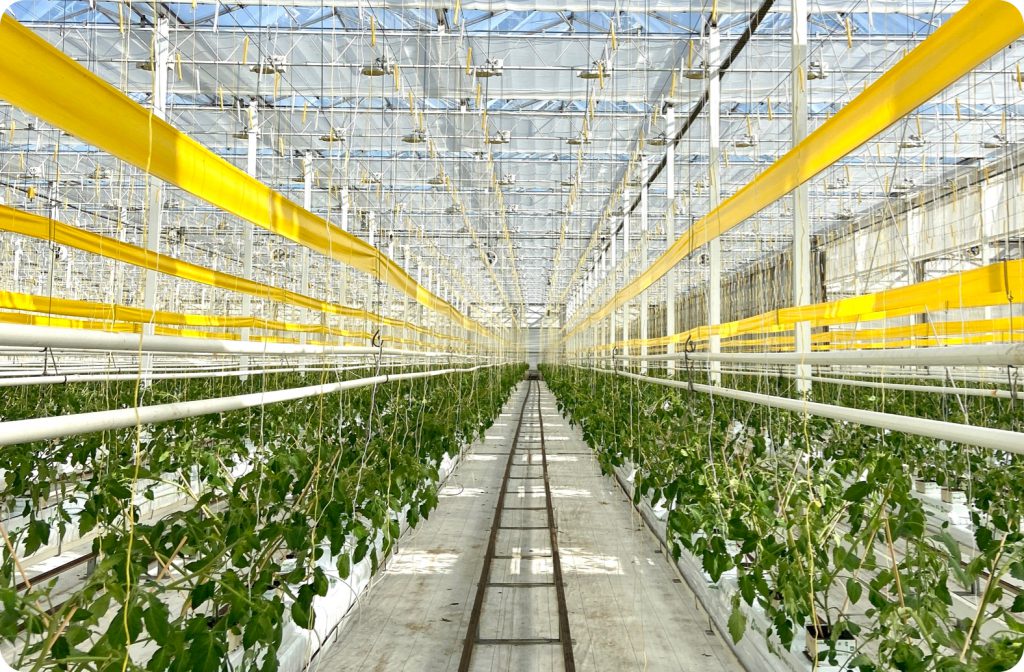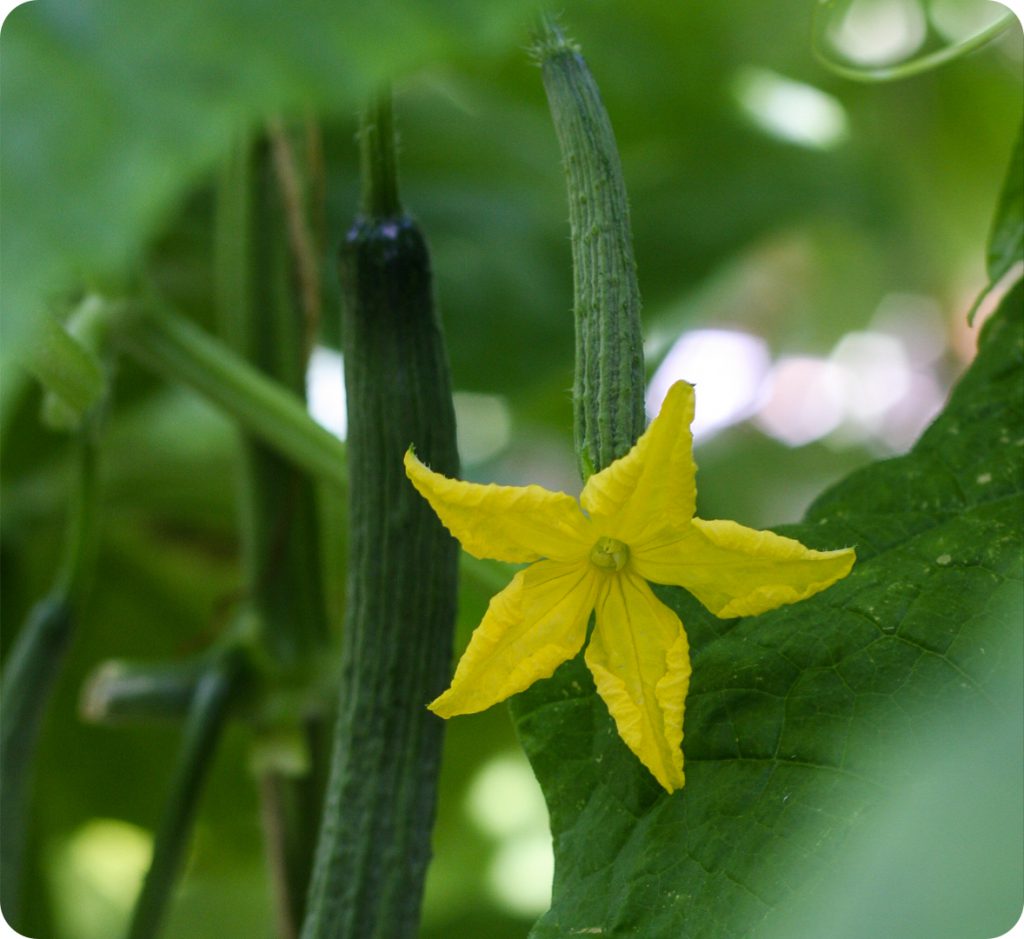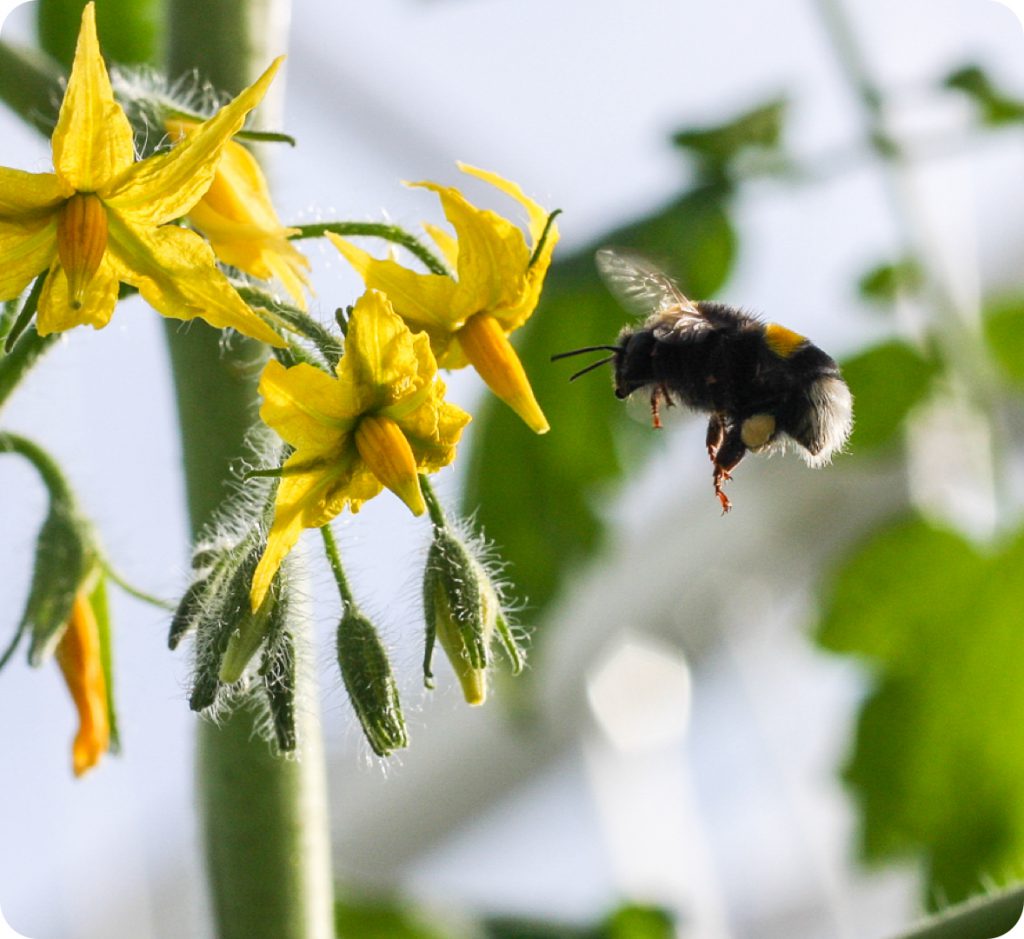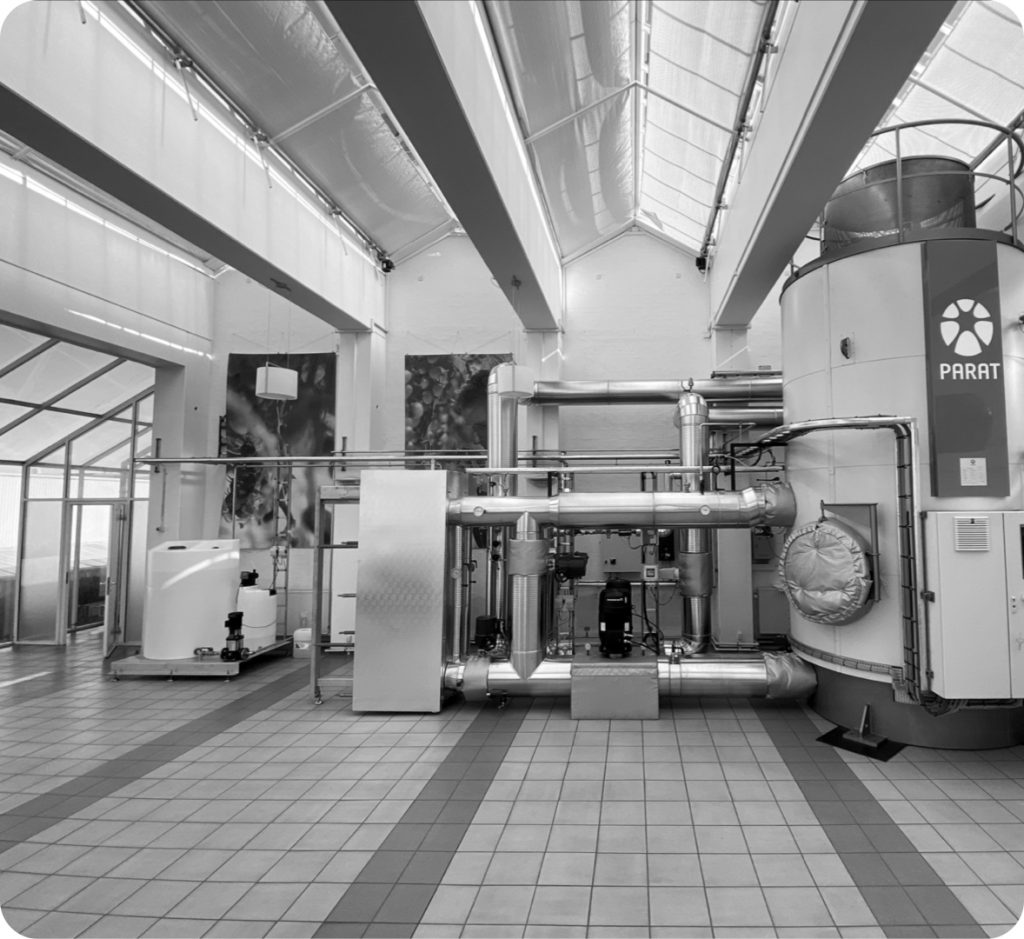
Danish horticulture with a focus on the environment
We take pride in growing our tomatoes, cucumbers and peppers with the greatest possible consideration for our environment and surroundings, and we strive to have the lowest CO2 footprint in Europe within our industry.
Our ambition is to breed the tastiest greenhouse vegetables of the highest quality on the market, and we grow everything in greenhouses on Funen.
Each day, our selected gardeners look after, care for and hand-pick every sun-ripened tomato, cucumber and pepper with great care, and the importance of sustainability and the environment is factored into the entire production process:

Biological control
All our tomato farmers are trained to keep a sharp eye out for any pests on our plants. If you want to avoid pesticides and chemicals, it is incredibly important that all plants are kept under regular surveillance for pests. We have skilled employees who constantly monitor all of the greenhouses and deploy biological control in the form of assassin bugs and other beneficial animals where necessary.
We use bumblebees to pollinate all the tomato flowers to avoid the use of pesticides.

The bees and the flowers
At Alfred Pedersen & Søn in Bellinge on Funen, the sun shines through the roofs of the greenhouses and warms the air. Rows of endless tomatoes in various stages of ripening and the smell of tomato plants almost send one back to the long summer holidays of childhood.
Throughout the big buildings, bumblebees are buzzing around, busy doing what they do best: Pollinating plants! There is a soft buzz. Things come together in a higher unity. When the bumblebees are happy, our plants are happy. And that’s what it’s all about. Because without bees, there are no tomatoes, so we call them our everyday heroes.

Electric boiler and green conversion
We got a new electric kettle as an important part of the green transition. It’s probably a little bigger than the one you have at home on the kitchen counter, but it works in roughly the same way. With it we are able to generate heat from 100% green electricity from wind turbines because we can take the power from the wind turbines when they overproduce, and use it to heat up the water in the kettle. We use this heat as a backup for our district heating during both failures and peak loads. We previously used natural gas boilers, but we are now replacing these with the electric boiler. Another giant step in the right direction in the green transition.

